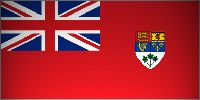Strike while the iron is hot
Babble on.
While some folks at NDHQ undeniably bear a strong resemblance to equine hindquarters, a report from the National Post's Chris Wattie stands as evidence some of them do in fact know their rear end from a hole in the ground.
The Canadian air force wants to spend $6-billion on a fleet of more than 50 new transport and search-and-rescue aircraft under a proposal to be presented to Cabinet this month, the National Post has learned.
Senior defence sources said the air force is putting the finishing touches on an "omnibus" plan to solve the looming crisis in its air transport system.
The plan would allow the Canadian Forces to buy badly needed replacements for its Hercules cargo planes, long overdue new search-and-rescue aircraft and a fleet of new heavy-lift helicopters in one fell swoop.
I suspect some of our senior uniformed officers have realized the promised increases in the Defence budget may well disappear in another Liberal minority - especially one propped up by the NDP - and have decided to spend the promise before it gets retracted. Smart manoeuvring, says I.
So what are they asking to buy?
The proposal now on the table would see the Department of National Defence buying between 15 and 20 of the latest model of Lockheed Martin's long-serving Hercules transport plane, the C-130J, to replace its fleet of model E Hercules, which are more than 40 years old.
It also includes 15 new fixed-wing search-and-rescue planes -- likely the Italian-made C-27J Spartan -- long overdue replacements for six CC-115 Buffalo aircraft now in service in British Columbia.
The air force also wants to buy 20 CH-47 Chinooks -- twin-rotor helicopters capable of carrying as many as 44 soldiers or more than 13 tonnes of cargo, vehicles or heavy weapons in overseas theatres such as Afghanistan.
The bill for the new aircraft and the necessary support and servicing contracts would come in at more than $6-billion, at least some of which will have to be new money allocated by Cabinet to the defence budget, the sources said.
The acquisition of the new planes would be spread over the next five to 10 years, but the air force has already said it needs to replace the Buffalos and the oldest of its Hercules planes by 2010 at the latest.
This is ambitious, but smart. Our existing fleet of 32 C-130E's is getting into Sea King territory as far as maintenance costs and headaches are concerned. But instead of putting forward a proposal to simply replace the current Hercs with more Hercs, the mandarins at DND have realized they can get better bang for the buck by splitting tactical airlift duties among different aircraft.
The C-130J "climbs faster and higher, flies farther at a higher cruise speed, and takes off and lands in a shorter distance" than earlier models. Hopefully, we can pick up some of the stretched C-130J-30 models - fifteen extra feet in length, they can carry more stuff, improving upon a well-known shortfall of this workhorse plane.
The C-27J would be primarily a SAR platform, but with roughly 80% of the capacity of the Hercules, it could double up if necessary on less demanding transport missions. One of the great attractions of this aircraft is the fact that it shares the same engines and propellers, the same avionics, and fully compatible cargo systems with the C-130. More interchangeability equals lower operating, maintenance and training costs, all other things being equal.
I'm probably most excited about the prospect of bringing the latest model of CH-47 Chinook back into the CF inventory. It seems obvious when you say it out loud, but heavy-lift helos can do things other aircraft simply can't. Like recover broken equipment in rough terrain. Like get troops in and out of difficult situations at longer ranges. Like transport needed supplies into remote areas without airstrips. In a country with as much inhospitable wilderness as Canada, these are useful capabilities.
Of course, as Wattie points out (and he's one of the few Canadian journalists who write credibly on military matters), this proposal leaves the question of strategic airlift unanswered. If it goes through, due to costs, I'd suspect the plan would put us one step closer to leasing heavy-lift instead of buying it. This will still pose a problem if we need a quick international deployment, but if we can get the JSS hulls built, and have Chinooks flying off them where required, our ability to move personnel and materiel will be substantially improved.
It will be most interesting to see the Liberal political response to this idea. Approving it will require they put their money where their mouth has been. Nixing or indefinitely putting it off will show their fine previous words to have been a lie. A nice fork this leaking source has caught the Martinis in, no?
Babble off.







2 Comments:
Nice load of spam you're getting.
My question is, how does the Chinook compare with the Blackhawk? I would think that the Blackhawk, as a single-rotor design, would be cheaper to maintain. It's also a much newer helicopter.
Last time I flew in a Herc, it had a little fire on the runway. Mind you, last time I flew in a Chinook, it had a hydraulics failure over Georgian Bay.
The Chinook can carry more than twice the load that the Blackhawk can, but the Blackhawk has a longer range.
As far as newness is concerned, as long as we get the newest version of the Chinooks, it shouldn't be a problem. I mean, the design of the Herc - to pick one example - is over 40 years old, and as long as you're not flying an old airframe, the design remains a sound one.
Post a Comment
<< Home